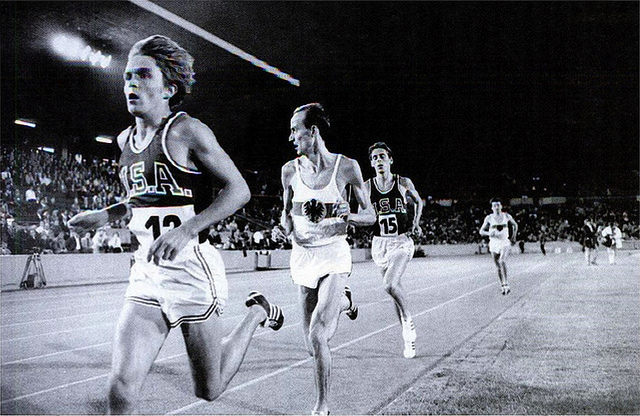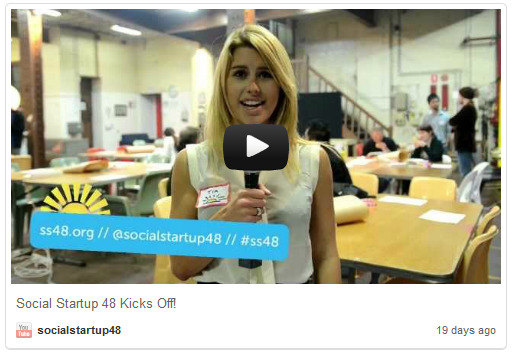 I recently published this on the StartSomeGood blog and wanted to share it here too for anyone who might have missed it there.
I recently published this on the StartSomeGood blog and wanted to share it here too for anyone who might have missed it there.
During my recent trip to Australia I attended two beautiful weddings. At one of them I was asked to do a reading. I agonized just a little over the choice, consulting with several friends for ideas and preparing a short-list of my favourite poems and speeches. I wanted something that spoke to the glorious adventure my friends were embarking on, that didn’t pretend it would be easy or always fun but which acknowledged the significance, magic and importance of the journey itself. Eventually I realized that as is true for so many things Dr Seuss said it best.
I want to share this with you because I think the journey of a social entrepreneur, like that of a marriage, contains all the elements the good Dr. writes of. The journey of being an entrepreneur, but especially of being a social entrepreneur, setting out to do something much harder than simply make a buck, is a long road filled with obstacles and incredible highs and meaning. Most of all it is an expression of true agency, the decision to create a more perfect world, the dedication to see this decision through: “You can steer yourself in any direction you choose.”
Like a marriage being a social entrepreneur is a journey of a thousand miles fueled by hope, passion and commitment. It is filled with uncertainty, requiring a determination to stick with it through good times and bad. Marriage is a statement of connection with an individual while being a social entrepreneur is a statement of connection with a community or even with the whole world.
When you choose to devote yourself to a cause it’s often a choice driven by a sense of need, of needing to do something about an issue, needing to reach out, connect, help those in need. Putting your shoulder to the wheel of history and moving it in the direction of justice is mighty work, and there will be setbacks. “Bang-ups and Hang-ups can happen to you.” You will feel tired and dispirited sometimes. You will feel uncertain about the way forward. You will wonder “what next?”.
But we need you. We need your passion, your smarts, your refusal to give up. The world needs people as brainy and footsy as you to be part of creating a better future. To help us see things we couldn’t see before, to go places previously unexplored, reveal things previously misunderstood. And as you go on this journey you will find connections and create successes that will fulfill and sustain you, inspire and uplift you. You will have fun, despite the hard work, because there’s nothing more exciting than creating your own destiny and working with a community of people in the pursuit of the future you all imagine together.
Your mountain is waiting. So get on your way!
Nb: when I read this to the bride and groom I changed “guy” to “guys”. Because there’s two of them.
Oh! The Places You’ll Go!
by Dr. Seuss
Congratulations!
Today is your day.
You’re off to Great Places!
You’re off and away!
You have brains in your head.
You have feet in your shoes.
You can steer yourself any direction you choose.
You’re on your own. And you know what you know. And YOU are the guy who’ll decide where to go.
You’ll look up and down streets. Look’em over with care. About some you will say, “I don’t choose to go there.” With your head full of brains and your shoes full of feet, you’re too smart to go down a not-so-good street.
And you may not find any you’ll want to go down. In that case, of course, you’ll head straight out of town. It’s opener there in the wide open air.
Out there things can happen and frequently do to people as brainy and footsy as you.
And when things start to happen, don’t worry. Don’t stew. Just go right along. You’ll start happening too.
Oh! The Places You’ll Go!
You’ll be on your way up!
You’ll be seeing great sights!
You’ll join the high fliers who soar to high heights.
You won’t lag behind, because you’ll have the speed. You’ll pass the whole gang and you’ll soon take the lead. Wherever you fly, you’ll be best of the best. Wherever you go, you will top all the rest.
Except when you don’t.
Because, sometimes, you won’t.
I’m sorry to say so but, sadly, it’s true that Bang-ups and Hang-ups can happen to you.
You can get all hung up in a prickle-ly perch. And your gang will fly on. You’ll be left in a Lurch.
You’ll come down from the Lurch with an unpleasant bump. And the chances are, then, that you’ll be in a Slump.
And when you’re in a Slump, you’re not in for much fun. Un-slumping yourself is not easily done.
You will come to a place where the streets are not marked. Some windows are lighted. But mostly they’re darked. A place you could sprain both your elbow and chin! Do you dare to stay out? Do you dare to go in? How much can you lose? How much can you win?
And if you go in, should you turn left or right…or right-and-three-quarters? Or, maybe, not quite? Or go around back and sneak in from behind? Simple it’s not, I’m afraid you will find, for a mind-maker-upper to make up his mind.
You can get so confused that you’ll start in to race down long wiggled roads at a break-necking pace and grind on for miles across weirdish wild space, headed, I fear, toward a most useless place.
The Waiting Place…for people just waiting.
Waiting for a train to go or a bus to come, or a plane to go or the mail to come, or the rain to go or the phone to ring, or the snow to snow or waiting around for a Yes or No or waiting for their hair to grow. Everyone is just waiting.
Waiting for the fish to bite or waiting for wind to fly a kite or waiting around for Friday night or waiting, perhaps, for their Uncle Jake or a pot to boil, or a Better Break or a string of pearls, or a pair of pants or a wig with curls, or Another Chance. Everyone is just waiting.
No! That’s not for you!
Somehow you’ll escape all that waiting and staying. You’ll find the bright places where Boom Bands are playing. With banner flip-flapping, once more you’ll ride high! Ready for anything under the sky. Ready because you’re that kind of a guy!
Oh, the places you’ll go! There is fun to be done! There are points to be scored. There are games to be won. And the magical things you can do with that ball will make you the winning-est winner of all. Fame! You’ll be famous as famous can be, with the whole wide world watching you win on TV.
Except when they don’t. Because, sometimes, they won’t.
I’m afraid that some times you’ll play lonely games too. Games you can’t win ‘cause you’ll play against you.
All Alone!
Whether you like it or not, Alone will be something you’ll be quite a lot.
And when you’re alone, there’s a very good chance you’ll meet things that scare you right out of your pants. There are some, down the road between hither and yon, that can scare you so much you won’t want to go on.
But on you will go though the weather be foul. On you will go though your enemies prowl. On you will go though the Hakken-Kraks howl. Onward up many a frightening creek, though your arms may get sore and your sneakers may leak. On and on you will hike. And I know you’ll hike far and face up to your problems whatever they are.
You’ll get mixed up, of course, as you already know. You’ll get mixed up with many strange birds as you go. So be sure when you step. Step with care and great tact and remember that Life’s a Great Balancing Act. Just never forget to be dexterous and deft. And never mix up your right foot with your left.
And will you succeed?
Yes! You will, indeed!
(98 and ¾ percent guaranteed.)
Kid, you’ll move mountains!
So…be your name Buxbaum or Bixby or Bray or Mordecai Ale Van Allen O’Shea, you’re off to Great Places!
Today is your day!
Your mountain is waiting.
So…get on your way!




 Bill Drayton, founder of
Bill Drayton, founder of 

 I recently published this
I recently published this